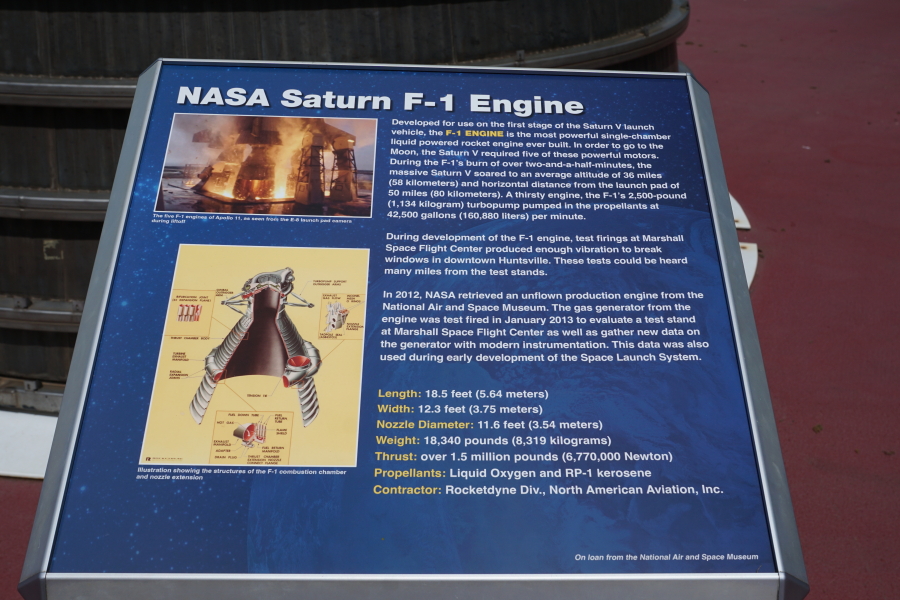| Prev |
heroicrelics.org U.S. Space & Rocket Center Site Index F-1 Engine F-4028 (Outdoors) Gallery |
Next |
dsce1665.jpg
The sign next to the F-1 engine in Apollo Court.
It reads
Developed for use on the first stage of the Saturn V launch vehicle, the F-1 engine is the most powerful single-chamber liquid powered rocket engine ever built. In order to go to the Moon, the Saturn V required five of these powerful motors. During the F-1's burn of over two-and-a-half minutes, the massive Saturn V soared to an average altitude of 36 miles (58 kilometers) and a horizontal distance from the launch pad of 50 miles (80 kilometers). A thirsty engine, the F-1's 2,500-pound (1,134 kilogram) turbopump pumped in the propellants at 42,500 gallons (160,880 liters) per minute. NASA Saturn F-1 Engine
During development of the F-1 engine, test firings at Marshall Space Flight Center produced enough vibration to break windows in downtown Huntsville. These tests could be heard many miles from the test stands.
In 2012, NASA retrieved an unflown production engine from the National Air and Space Museum. The gas generator from the engine was test fired in January 2013 to evaluate a test stand at Marshall Space flight Center as well as gather new data on the generator with modern instrumentation. This data was also used during early development of the Space Launch System.
Length: 18.5 feet (5.64 meters)
Width: 12.3 feet (3.75 meters)
Nozzle Diameter: 11.6 feet (3.54 meters)
Weight: 18,340 pounds (8,319 kilograms)
Thrust: over 1.5 million pounds (6,770,000 Newton)
Propellants: Liquid Oxygen and RP-1 kerosene)
Contractor: Rocketdyne Div., North American Aviation, Inc.

| Time picture taken | Sun Apr 14 14:15:24 2024 |
| Location picture taken |
Apollo Court U.S. Space & Rocket Center Huntsville, AL |
| Prev |
heroicrelics.org U.S. Space & Rocket Center Site Index F-1 Engine F-4028 (Outdoors) Gallery |
Next |